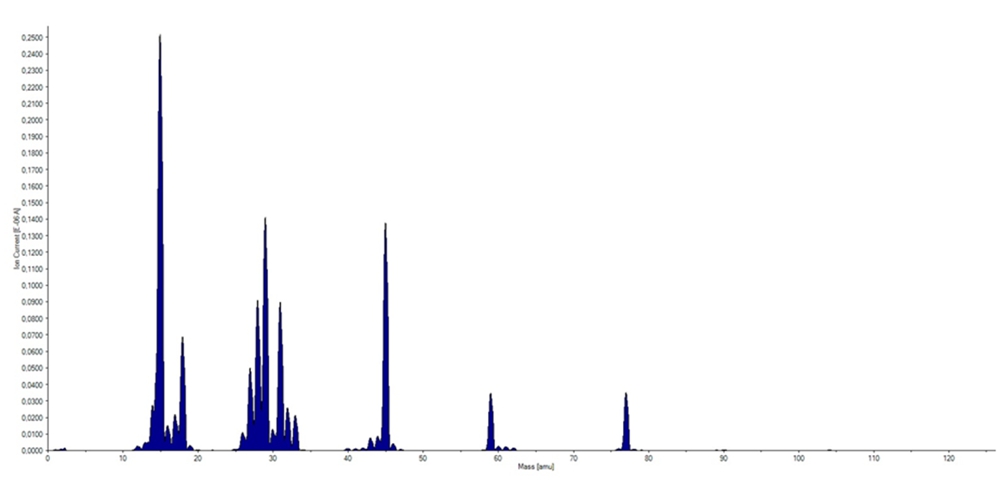Projects
Environmental monitoring
For the tasks of environmental monitoring, the Scientific Instruments JSC company has developed portable mass spectrometers "Micropor" and "Micropor-M" with membrane sample introduction. The detection limits for trace impurities depend on the type of analyte and are in the range of 0.01 – 10 ppm. The upper measurement level is up to 500 ppm.
Among the main tasks solved by these mass spectrometers are the following ones:
-
Express diagnostics of air in cases of emergency and terrorist acts
-
Environment monitoring in confined spaces on spaceships, submarines and in the mines
-
Search for hydrocarbon deposits
-
Ensuring chemical safety in crowded places
-
Detection and measurement of the content of substances dissolved in water, such as alkanes, alkenes, gasoline, toluene, xylene, dichloroethane, methane, chlorobenzene, phenol, oxygen, nitrogen and others
-
Rapid detection of toxic substances in out-of-laboratory conditions
-
Monitoring of the composition of gas mixtures in technological processes
-
Search for places of leakage in vessels with gases and in the main pipelines
Operation principle
The mass spectrometers are based on a quadrupole mass analyzer with a mass number measurement range from 1 to 300 amu. The analyzer rods are 100 mm long. The instruments use a closed electron impact ion source. Ion detection is carried out by a secondary electron multiplier (SEM).
There are two modes of the analyzer operation: spectrum scanning in a given mass range and continuous measurement of selected spectral peaks in real time.
The working pressure in the vacuum chamber during the analysis is 10-5 mm Hg. The sample introduction unit is equipped with an internal shut-off valve that allows the membrane to be changed without breaking the vacuum in the instrument. To increase the threshold sensitivity of the instruments, a "direct" introduction of the analyzed gas into the region of the ion source is used.
The sample is introduced through a hydrophobic selective membrane that has increased permeability to organic gas components of microimpurities of the analyzed medium (air or liquid).
The "Micropor" analyzer is pumped out by turbomolecular and membrane pumps. The instrument has a portable design: a mass spectrometer, cables, an adapter for powering the mass spectrometer from the alternating current network 220 V / 50 Hz, an autonomous battery power supply with a capacity of 14 A⋅h and power wires from a car battery are built into the shockproof waterproof case.

The "Micropor-M" analyzer is pumped out by a differential magnetic discharge pump MRN-40D.
"Micropor-M" has a desktop design and is powered from the alternating current network 220 V / 50 Hz.

The instrument is controlled via the Ethernet 10/100 Base - TX data channel.
The software makes it possible to carry out qualitative and quantitative analysis.
Differential magnetic discharge pump

The MRN-40D magnetic discharge pump used in the "Micropor-M" instrument is designed for oil-free pumping of gases in high-vacuum and ultra-high-vacuum systems. During the evacuation, the sample molecules are ionized by the discharge electrons between the anode and cathode of the pump. To increase the ionization efficiency, the electrons are twisted by a magnetic field.
The ionized molecules of the pumped out substances are accelerated in a strong electric field and implanted in the material of the pump cathode. The evacuated molecules are "bricked up" in the film on the cathode surface, so the pump has no "exhaust". In MRN-40D, the cathode is made of various materials – a composition of titanium and tantalum. The evacuation of gas molecules is carried out by ionized titanium atoms, and the evacuation of noble gases and the "bricking up" of the evacuated molecules in the cathode materials is carried out by the ions and atoms of tantalum.
Due to this separation of the functions of the ions of the cathode materials, the pump has a long service life of continuous operation – more than 100 000 hours. At the same time, spontaneous emissions, for example, of argon, are completely absent, and a significantly higher stability of operation is achieved when pumping out noble gases and organic compounds.
Main technical parameters of the pump
| Residual pressure | 10-7 Pa (10-9 mm Hg) |
| Pumping speed at Р=10-3 Pa (for air) | 10 l/s |
| Electrode system | diode differential system (Ti / Ta) |
| Supply voltage | 7 kV |
| Discharge current |
0.1 μA at P = 10-7 Pa 1 mA at P = 10-3 Pa |
| Estimated service life (at P = 10-4 Pa) | 294 000 hours |
| Weight | 4.2 kg |
Technical characteristics of the "Micropor" mass spectrometer
| Range of measured mass numbers | 1 – 300 amu |
| Resolution at 10% of peak height | 0.5 – 2.5 amu |
| Detection limits | 0.01 – 10 ppm |
| Maximum working pressure | 1×10-4 torr |
| Supply voltage | 220 V, 12 – 36 V |
| Continuous working time | not less than 6 hours |
| Battery capacity | 14 A•h |
| Weight | 24 kg |
| Dimensions | 500 × 305 × 457 mm |
Technical characteristics of the "Micropor-M" mass spectrometer
| Range of measured mass numbers | 1 – 300 amu |
| Resolution at 10% of peak height | 0.5 – 2.5 amu |
| Detection limits | 0.01 – 10 ppm |
| Maximum working pressure | 1×10-4 torr |
| Supply voltage | 220 V |
| Power consumption | not more than 70 W |
| Weight | 29 kg |
| Dimensions | 510 × 220 × 390 mm |
Spectrum example

Mass spectrum of ethyl methyl carbonate
